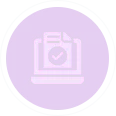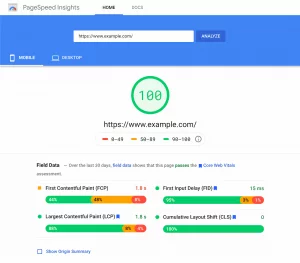If you’ve ever clicked on a link and landed on a dreaded 404 error page, you know how frustrating broken URLs can be—for both site visitors and search engines. In the world of WordPress, permalinks (short for “permanent links”) serve as the foundation of your website’s navigation and content structure. They define how your URLs look and function, playing a vital role in SEO, user experience, and site performance.
But as your site grows—new content is added, slugs are edited, themes and plugins change—these permalinks can sometimes break or behave unexpectedly. Fortunately, WordPress provides a quick and effective solution: regenerating permalinks.
In this guide, we’ll show you exactly how to regenerate permalinks the right way, why it’s essential for the health of your website, and how to avoid common pitfalls that lead to broken links in the first place. Whether you’re a beginner or a seasoned WordPress user, this simple step could make a big difference in your site’s structure, visibility, and user satisfaction.
What Are Permalinks (and Why They Matter More Than You Think)?
Think of permalinks as the street addresses of your website. They are the permanent URLs assigned to each blog post, page, or piece of content on your site. Just like a well-organized neighborhood with labeled streets makes navigation easier, a well-structured permalink system helps both users and search engines find your content with ease.
Permalinks do more than just define your website’s structure—they also carry significant weight in how your site performs in search engine rankings. But over time, as your website evolves—new themes, plugin installations, content updates, or URL structure changes—those once-reliable links can break, leading visitors (and Google bots) straight into a frustrating dead-end.
The good news? Regenerating permalinks in WordPress is simple and can instantly restore the integrity of your site’s architecture. In this guide, we’ll take you through exactly how to do that—and why it’s one of the most underrated yet critical steps in website maintenance.
Why Regenerate Permalinks Is a Must-Do Task
Here’s why hitting that “Save Changes” button under WordPress permalink settings can save your SEO, boost user experience, and keep your content ecosystem running smoothly:
🔍 1. SEO Optimization: Make Google Happy
Search engines love clean, keyword-rich URLs. They signal relevance and make crawling easier. Regenerating permalinks ensures your URLs are properly formatted, functional, and reflective of your latest content strategy—all key elements for ranking well.
👥 2. Better User Experience: No More 404 Headaches
Broken or outdated links disrupt the flow for users, leading to confusion, frustration, and higher bounce rates. When you regenerate permalinks, you’re essentially restoring a clear path for visitors to follow—no detours or dead ends.
🧩 3. Content Management: Keep Everything in Sync
Whether you’re reorganizing categories, renaming slugs, or updating blog titles, regenerating permalinks ensures all internal links point to the right place. This is especially important for larger sites with hundreds of interconnected pages and posts.
How to Regenerate Permalinks in WordPress?
The process to regenerate permalinks in WordPress is straightforward. Follow these steps:
Step 1: Access Permalink Settings
- Log in to your WordPress dashboard.
- Navigate to “Settings” and click on “Permalinks.”
Step 2: Choose Permalink Structure
- Once in the Permalink Settings, you’ll see various permalink structure options.
- Select the permalink structure that best describes your website’s content organization. You can choose from Common Settings like Plain, Day and Name, Month and Name, Numeric, Post Name, or create a Custom Structure. You can check our blog on how to custom create permalinks.
Step 3: Save Changes
- After selecting your preferred permalink structure, scroll down and click on the “Save Changes” button.
- WordPress will automatically update your site’s permalink structure.
Step 4: Flush Rewrite Rules
- Sometimes, simply saving permalink changes might not be enough to regenerate permalinks across your site.
- To ensure all links are updated, you can flush rewrite rules by installing and activating a plugin like “Permalink Manager Lite” or “Regenerate Permalinks” from the WordPress plugin repository.
- Once the installation is completed, navigate to the plugin settings and regenerate permalinks.
Resolve Permalink Errors
Are you still encountering errors even after you regenerate permalinks? If you’re still seeing 404 errors, consider clearing your browser cache. Check out our guide on clearing browser cache in all major browsers for detailed instructions.
If clearing the cache doesn’t resolve the issue, it’s time to troubleshoot. Reflect on any recent actions or changes that occurred before the 404 errors appeared.
If you recently installed or updated a WordPress plugin, it could be affecting your links. Try deactivating the installed plugin to see if this resolves the 404 error.
If deactivating the specific plugin doesn’t work, you might need to deactivate all plugins temporarily to identify the culprit. It’s advisable to put your site into maintenance mode during this process to inform visitors and maintain a professional appearance.
Once you’ve deactivated all plugins, gradually reactivate them one by one and test how each affects your links. When the 404 error reoccurs, you’ve pinpointed the problematic plugin. At this point, you can choose to delete the plugin from your site or seek support from the developer.
With the troublesome plugin removed or resolved, your site should be error-free and functioning smoothly. If you’re still experiencing issues, refer to our list of common WordPress errors and their solutions for further assistance.
Fix Broken Permalinks
Discovering and resolving broken permalinks is crucial to maintaining a seamless user experience and administering your website’s search engine rankings. Dead URLs can not only deter visitors and hinder conversions but also impact your site’s visibility in search engine results over time, leading to decreased traffic.
To safeguard your website’s performance and regenerate permalinks successfully, it’s essential to identify and address broken links promptly. One effective solution for tracking and fixing broken permalinks on your WordPress site is by utilizing the All in One SEO (AIOSEO) plugin or Broken Link Checker. AIOSEO presents a comprehensive suite of tools to streamline the process to fix broken permalinks or regenerate permalinks.
With AIOSEO, you can effortlessly detect broken links and rectify them with just a few clicks, thanks to its robust redirection manager. For detailed instructions on how to track 404 pages and implement redirects in WordPress using AIOSEO, refer to our comprehensive guide.
By proactively managing broken permalinks, you can uphold the integrity of your website, enhance user satisfaction, and safeguard your search engine rankings. We trust that this article has equipped you with the knowledge needed to effectively manage and maintain your WordPress site’s permalink structure. For further insights, consider exploring our guides on selecting the best website builder and our expert recommendations for top domain registrars.
Tips for Effective Permalink Management
- Choose Descriptive Permalinks: Opt for permalinks that are concise, descriptive, and relevant to your content. This not only improves SEO but also enhances user experience.
- Avoid Changing Permalinks Frequently: Constantly altering permalinks can confuse search engines and lead to broken links. Stick to a consistent structure unless absolutely necessary.
- Redirect Old Permalinks: If you change a permalink for an existing post or page, set up 301 redirects to ensure seamless navigation for users and preserve SEO equity.
- Regularly Audit Permalinks: Periodically review your site’s permalinks to acknowledge and fix any broken links or outdated URLs. Plugins like Broken Link Checker can help automate this process.
Keep Your WordPress Permalinks Clean and SEO-Ready
By following the steps and best practices outlined above, you can successfully regenerate permalinks in WordPress—ensuring that your website remains well-structured, user-friendly, and search engine optimized. A clean permalink system not only improves the user experience but also plays a vital role in sustaining long-term SEO health.
However, maintaining reliable site performance doesn’t end with fixing permalinks. Hosting performance, caching, and site stability all influence how well your site ranks and converts.
Ready to elevate your WordPress site’s speed, reliability, and SEO?
Try Nestify for FREE—an enterprise-grade managed hosting solution built to optimize WordPress performance, streamline workflows, and eliminate technical headaches.
FAQs on How to Regenerate Permalinks, Redirection & Optimization
Is there a plugin to help with broken permalinks and redirects?
Yes, plugins like Redirection, Yoast SEO Premium, and All in One SEO can help manage 301 redirects and track 404 errors. These tools are user-friendly and excellent for maintaining link integrity during content changes or migrations.
Should I use plain permalinks or pretty permalinks for SEO?
“Pretty permalinks” (e.g., yourdomain.com/sample-post) are better for SEO than plain ones with query strings (yourdomain.com/?p=123). They are cleaner, more readable, and easier for search engines and users to understand.
How can I test if my permalinks are working correctly?
After regenerating permalinks, test a few URLs manually in your browser or use SEO audit tools like Screaming Frog, Ahrefs, or Google Search Console to check for broken links or crawl issues.



